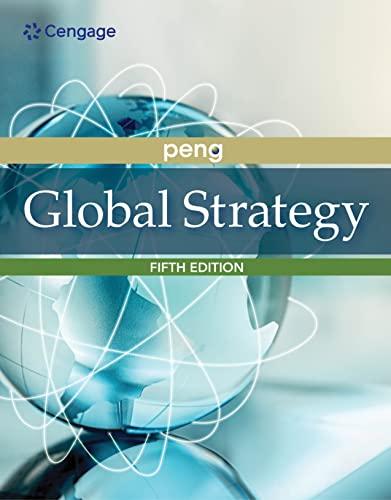Question
1. The United States economy is currently suffering from high inflation. Draw a correctly labeled graph of short-runaggregate supply, long-run aggregate supply and aggregate demand
1. The United States economy is currently suffering from high inflation. Draw a correctly labeled graph of short-runaggregate supply, long-run aggregate supply and aggregate demand illustrating the current US economy.
2. The economy is currently experiencing inflation of 5%. The nominal interest rate is currently 9%. Calculate thereal interest rate.
3. The Fed wishes to target an inflation rate between 2% and 3%. Identify how the Fed could change each of thefollowing to achieve its targeted inflation rate.
a. The Discount Rate (circle one): Increase Decrease
b. The Reserve Requirement (circle one): Increase Decrease
4. Which open market operation should the Fed engage in to achieve its goal? Explain the process by which OMOcan be used to reduce the rate of inflation.
5. On your AS/AD graph on question 1, show the effect of the Fed's actions.
6. Draw a correctly labeled money market graph illustrating the effect of the Fed's actions on the nominal interestrate and the quantity of money.
7. Assume the economy is now in a mild recession caused by a fall in export demand from the country's tradingpartners. The Fed takes no action and the government does not engage in any fiscal policies. Explain how the USeconomy will adjust to the fall in exports in the long-run. (You may include a graph in your explanation, but arenot required to include one.)
8. Now assume that the Fed decides to engage in open market operations to help the economy recover from itsmild recession. The Fed buys $50 billion worth of government bonds from the public and the current requiredreserve is currently 20%.
a. Calculate the total change in the money supply that could result from the Fed's bond purchase.
b. Explain the process by which the Fed's initial bond purchase leads to a proportionally larger increase inthe money supply.
9. Using a correctly labeled AS/AD graph, show the effect of the Fed's action on price level and unemployment inthe US economy.
10. Assume that instead of just buying bonds, the Fed decides to lower the reserve requirement to 0.1. a. Calculate the size of the money multiplier following the decrease in the reserve ratio.
b. Assume that "Commercial Bank X" has total deposits equaling $400 million and had no excess reservesbefore the Fed lowered the reserve requirement. How much will "Bank X's" excess reserves change by following the Fed's policy?
c. Assume "Bank X" loans out its newly acquired excess reserves. Calculate the total change in the moneysupply that could result from these new loans.
Step by Step Solution
There are 3 Steps involved in it
Step: 1

Get Instant Access with AI-Powered Solutions
See step-by-step solutions with expert insights and AI powered tools for academic success
Step: 2

Step: 3

Ace Your Homework with AI
Get the answers you need in no time with our AI-driven, step-by-step assistance
Get Started


